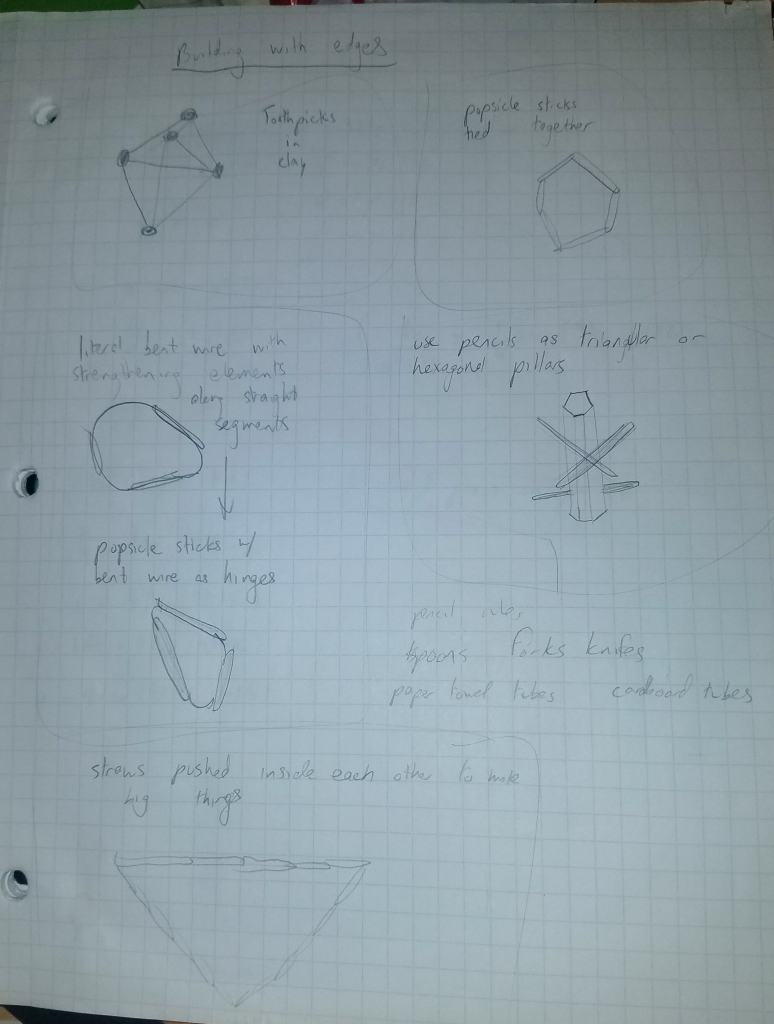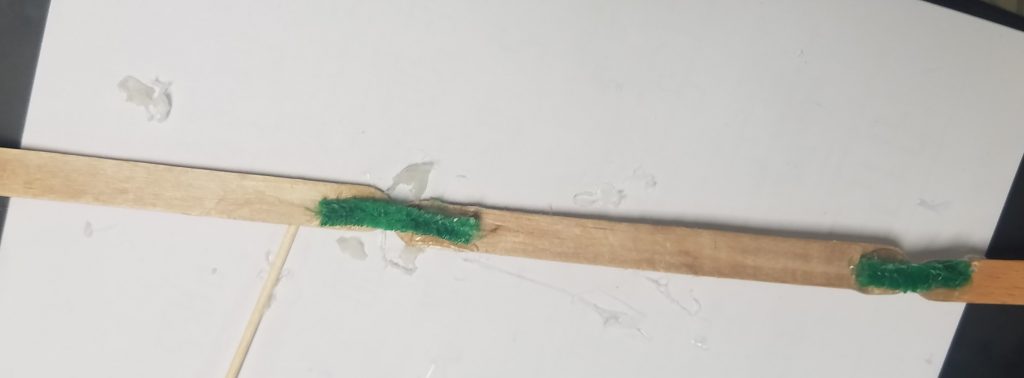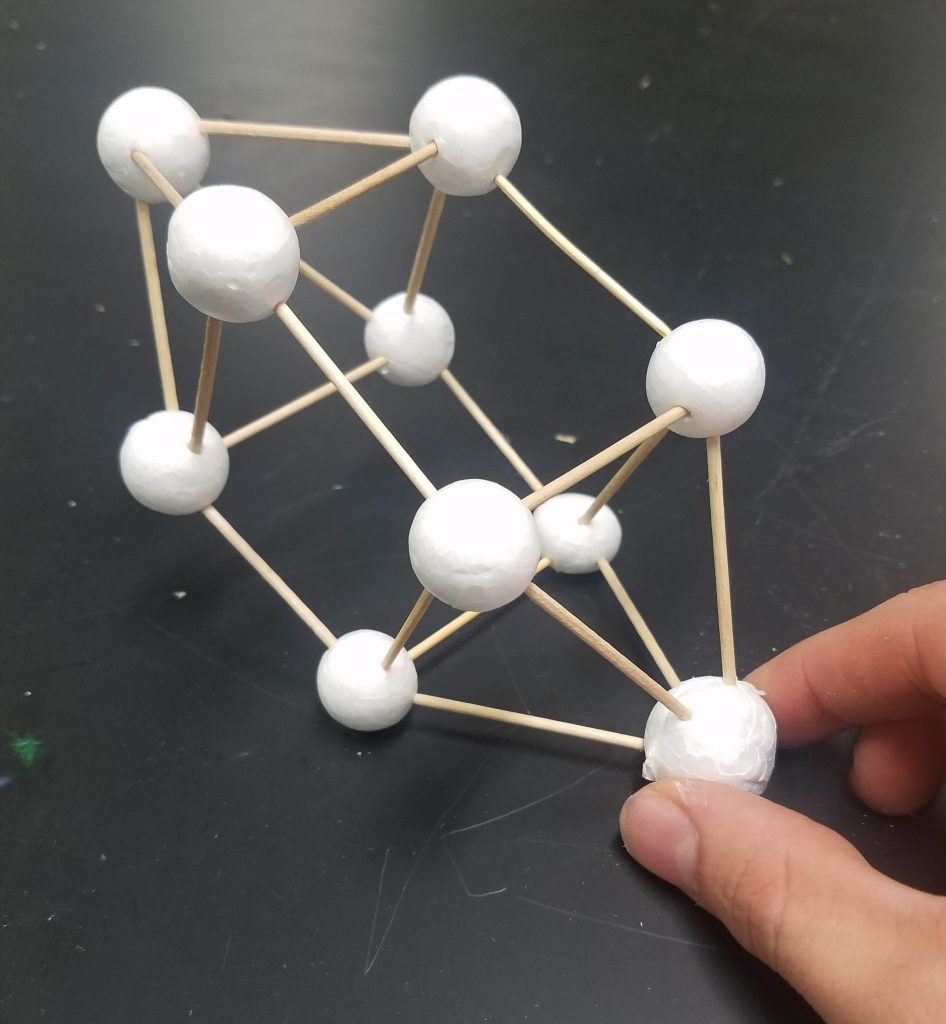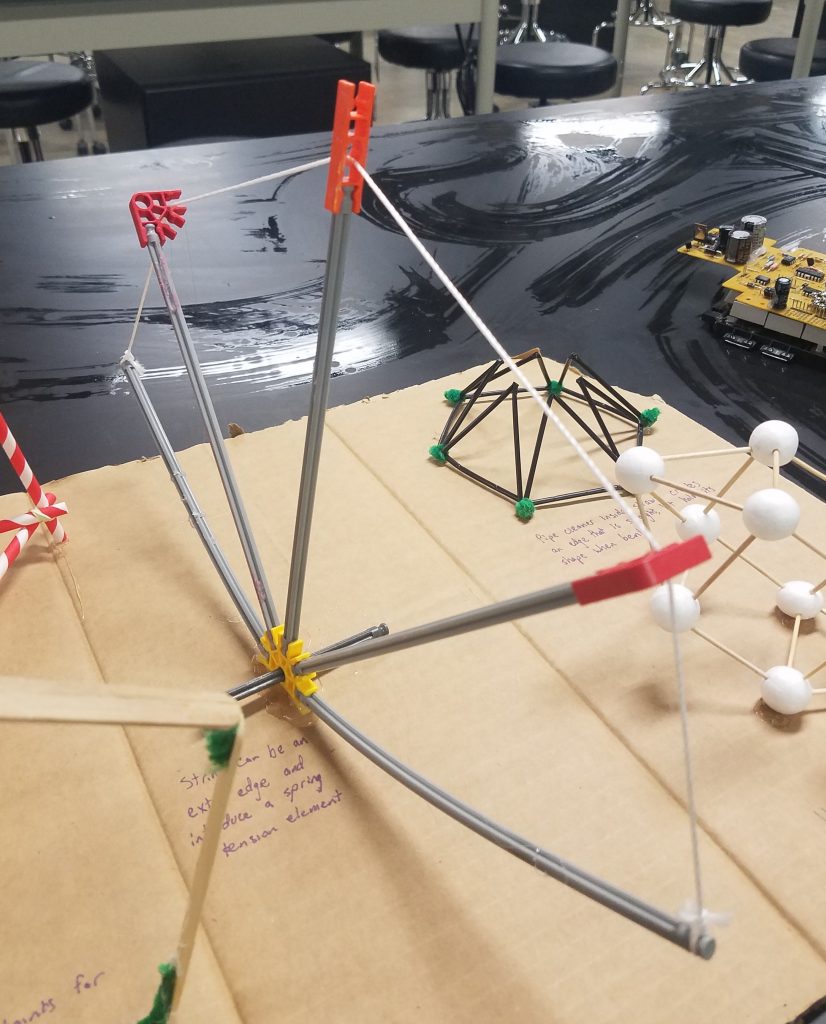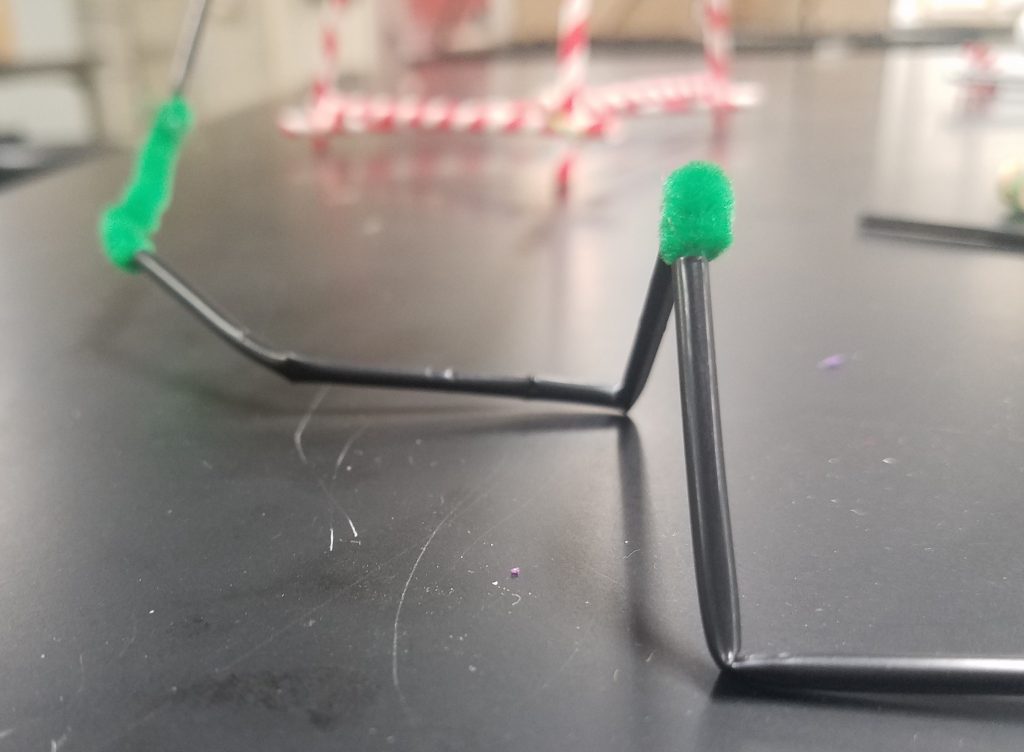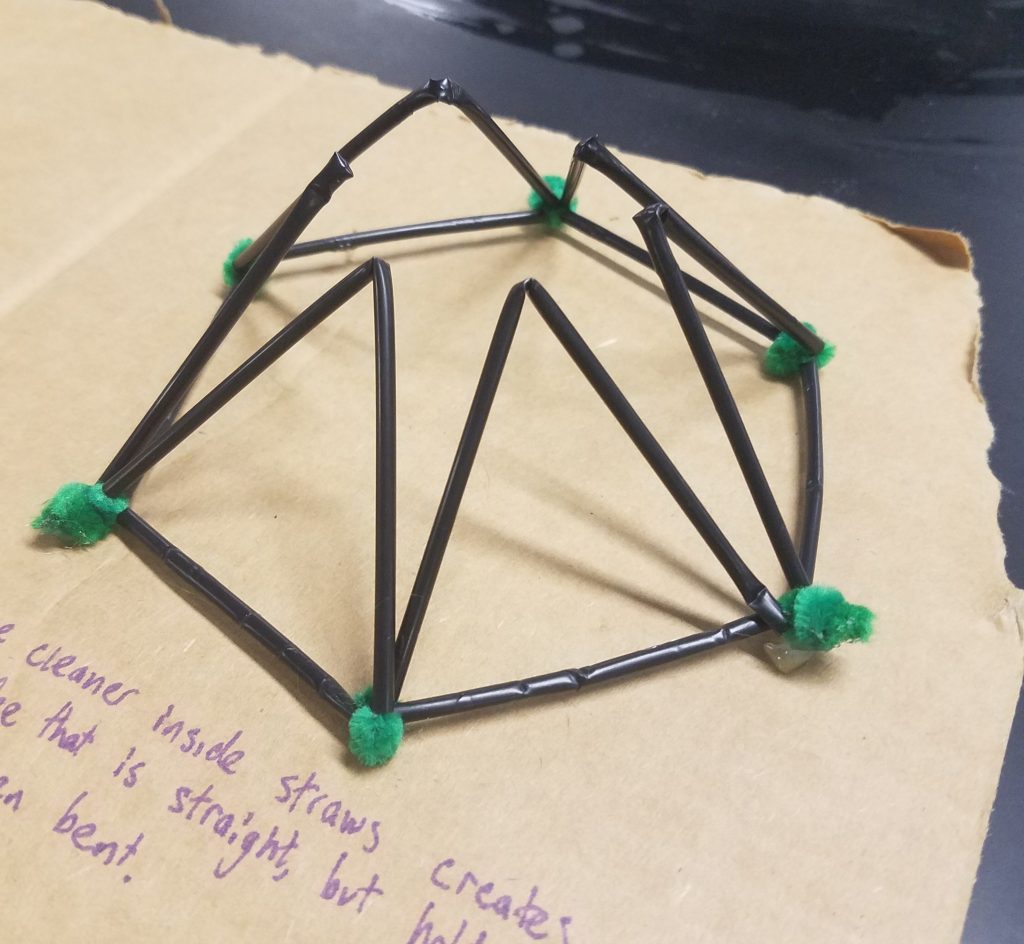In this episode of ENGI 210: Prototyping and Fabrication, we tackle low fidelity building! As your host, I’ll be creating some structures using edges, starting with conceptual sketches and ending with 5 low-fidelity 3D models.
I first hit the sketchbook, firing out ideas to prototype later. Starting at the top left and going clockwise:
- Toothpicks as edges with clay balls as vertices
- Popsicle sticks tied together to form shapes
- Using pencils as a shortcut for 60 or 120 degree angles
- A list of long thin household items to use as edges
- Straws pushed inside each other to increase the edge length
- Popsicle sticks form rigid edges and wire creates flexible joints
- Bent wire in a loop with external sheath to provide straight segments
After some solid brainstorming, I went to the low fidelity cart to survey my materials. Long, skinny, edge-like materials include popsicle sticks, toothpicks, straws, and pipe-cleaners.
Shape 1: Tall pyramid
To demonstrate how straws could be extended to lengthen edges, I wanted to build something TALL. I settled on a tetrahedron with a double-size frame. I first tried with the smaller black straws, but they were very flimsy. I also connected them with Play-doh at the vertices, which was too soft to hold anything in place. For the second iteration, I used the stronger red-white straws. I also bound them at the corners with rubber bands, adding more strength to the overall structure.
Shape 2: Nonrigid Pentagon
For the next shape, I wanted to use my “wire as hinge” approach. I lined up a bunch of popsicle sticks, and glued small pipe-cleaner segments to them. Superglue failed to hold, but hot glue worked perfectly. I tested the strength and rigidity of the bends, which were flexible, but slightly too weak to fully hold their shape when exposed to gravity. However, they were very good at holding nonstandard angles. To demonstrate this ability, I made a pentagon, which is full of 108 degree angles hard to get through other means. It turned out slightly flexible and wobbly, but the pipe cleaners allowed fine adjustments of the joints.
Shape 3: Toothpick Gemstone
Since the pentagonal vertices were a little shaky, I wanted a rigid structure next. I tried using toothpicks in clay, but the clay again proved too soft. I then pivoted to foam balls, which held the toothpick points in firm place very well. Since this was a smaller and more manageable method of construction, I upped the complexity of the geometry. I made a pretty cool prism structure that looks almost like some kind of gem. The toothpicks and foam hold much more firmly than I was expecting. For smaller, complex 3D shapes, this could work pretty well.
Shape 4: Tensioned Fin
I wanted at least one shape to use string to hold a piece bent, almost like a simple bow. There is plenty of string available, but I had limited choices for long edge materials that could bend without being deformed. I settled on Knex, since it would stay bent like a spring for a long time without snapping or deforming. I made a T shape, then tied a string from one far end to the other. I then lifted up the middle, locking it in place and flexing the entire structure. This created one big curved edge at the bottom and two string edges near the top. To fully utilize my material, I put two extra Knex edge pieces on the diagonals, making the structure a little more interesting by breaking the string into foujr segments. This had the side effect of making the entire shape look like a fin or bat wing.
Shape 5: Reinforced Pipe-Cleaner Hexagon
I didn’t have a great idea of what to do for my 5th shape, so I started playing around. By some miracle of luck (or just raw skill), I found out that the black straws are the perfect size to house an internal pipe cleaner. This combines the best of both worlds: a rigid plastic exoskeleton and the ability to bend and hold shape. I played around with this concept for a bit, seeing how well I could bend the hybrid edge and what shapes I could make. I created a triangle of three pipe-straws, but that wasn’t exciting enough. I then put bends at the midpoints to make a hexagon, but still, not cool enough. It needed to expand to 3D. I tried a few shapes poking up, but settled on triangles coming up off of each hexagonal edge. This nets a cool effect of a gate getting ready to close, and demonstrates the ability of the pipe-straws to hold an angle.
After completing the 5 shapes, I affixed them to cardboard and wrote a short description. Low fidelity edge models: COMPLETE
